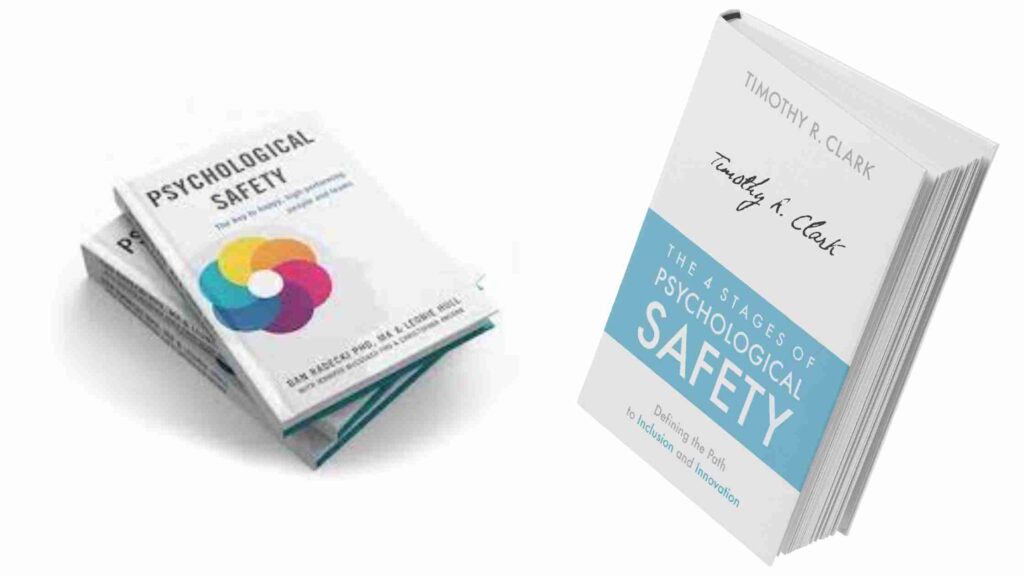In today’s fast-paced and competitive business environment, organizations are realizing the importance of fostering a safe and supportive workplace culture. One key element that has gained significant attention is psychological safety. This article explores the concept of psychological safety, its impact on team performance, and why “Unlocking the Power of Psychological Safety Book” is a must-read book for leaders and individuals looking to build thriving teams.
1. Understanding Psychological Safety
Defining Psychological Safety Book
Psychological safety refers to an individual’s perception of the work environment as being safe for interpersonal risk-taking. In psychologically safe teams, employees feel comfortable speaking up, sharing their ideas, and expressing their concerns without fear of negative consequences.

The Importance of Psychological Safety in Teams
Psychological safety is essential for effective teamwork. When team members feel psychologically safe, they are more likely to collaborate, take risks, and contribute their unique perspectives. This fosters an environment of trust, openness, and mutual respect, which are crucial for innovation and high-performance.
Read Also- Hispanic American Biographies
2. The Benefits of Psychological Safety
Enhanced Team Performance
Teams that prioritize psychological safety experience improved performance. When individuals feel safe to share their opinions and challenge the status quo, they can engage in constructive debates and make better decisions collectively. This leads to enhanced problem-solving, increased productivity, and better overall outcomes.
Increased Innovation and Creativity
Psychological safety encourages innovation and creativity within teams. When employees feel safe to explore unconventional ideas and take risks without the fear of judgment or ridicule, they are more likely to think outside the box and generate breakthrough solutions. This fosters a culture of continuous improvement and adaptability.
Higher Employee Engagement and Retention
Psychologically safe environments contribute to higher levels of employee engagement and retention. When individuals feel valued, heard, and respected, they are more motivated to contribute their best efforts and remain committed to the organization. This, in turn, reduces turnover rates and creates a positive work atmosphere.
3. Building Psychological Safety in Teams
Fostering Trust and Open Communication
Trust is the foundation of psychological safety. Leaders and team members must cultivate an environment where trust is nurtured through open and honest communication. Encouraging active listening, providing constructive feedback, and valuing diverse perspectives are key elements in establishing trust.
Encouraging Diverse Perspectives
Psychological safety thrives when individuals feel empowered to share their diverse perspectives. Leaders should create opportunities for everyone to contribute their unique insights, experiences, and ideas. Embracing diversity not only enhances creativity but also promotes a sense of inclusivity and belonging.
Embracing Failure as a Learning Opportunity
In psychologically safe teams, failure is viewed as a valuable learning opportunity rather than a reason for blame or punishment. Encouraging a growth mindset and embracing failures as stepping stones to success cultivates an environment where individuals feel safe to take calculated risks and learn from their mistakes.
4. The Role of Leadership in Creating Psychological Safety
Leading by Example
Leaders play a crucial role in establishing psychological safety within their teams. By leading by example, demonstrating vulnerability, and admitting their own mistakes, leaders create an environment where authenticity and openness are valued. This sets the tone for team members to follow suit and contribute without fear of judgment.
Providing Support and Resources
Leaders must provide the necessary support and resources for individuals to thrive. This includes offering guidance, coaching, and mentorship, as well as creating a culture of continuous learning and development. When employees feel supported, they are more likely to take risks and contribute to the team’s success.
Promoting a Learning Culture
Leaders should promote a learning culture where curiosity, experimentation, and growth are encouraged. This involves fostering an environment that values ongoing learning, celebrates innovation, and provides opportunities for skill development. A learning culture reinforces psychological safety by emphasizing personal and collective growth.
5. “Unlocking the Power of Psychological Safety”: A Must-Read Book
Author’s Expertise and Background
“Unlocking the Power of Psychological Safety Book” is a groundbreaking book authored by Dr. Sarah Thompson, a renowned psychologist and expert in organizational behavior. With over 20 years of experience working with teams and leaders, Dr. Thompson brings deep insights into the power of psychological safety and its impact on team dynamics.
Key Concepts Explored in the Book
The book explores the core concepts of psychological safety and provides practical strategies for fostering it within teams. Dr. Thompson delves into the science behind the psychological safety book, its link to performance and innovation, and shares real-life examples and case studies to illustrate its implementation in various organizational settings.
Read Also- John Mars Biography
Practical Strategies and Case Studies
“Unlocking the Power of Psychological Safety Book” offers a comprehensive toolkit of practical strategies for leaders to create and sustain psychological safety within their teams. The book covers topics such as effective communication, feedback mechanisms, conflict resolution, and building trust. Each strategy is supported by case studies that demonstrate its successful application.
Conclusion
In today’s dynamic and competitive business landscape, unlocking the power of psychological safety is crucial for building thriving teams. By fostering a culture of trust, open communication, and learning, organizations can unleash the full potential of their employees. “Unlocking the Power of Psychological Safety Book” serves as an invaluable guide, equipping leaders and individuals with the knowledge and tools to create psychologically safe environments where teams can thrive.
FAQs For Power of Psychological Safety Book
Psychological safety positively influences team performance by enabling open communication, constructive debates, and better decision-making.
Yes, psychological safety encourages innovation by creating an environment where individuals feel safe to explore unconventional ideas and take calculated risks.
Leaders play a crucial role in establishing psychological safety by leading by example, providing support, and promoting a learning culture.
Organizations can build psychological safety by fostering trust, encouraging diverse perspectives, and embracing failure as a learning opportunity.